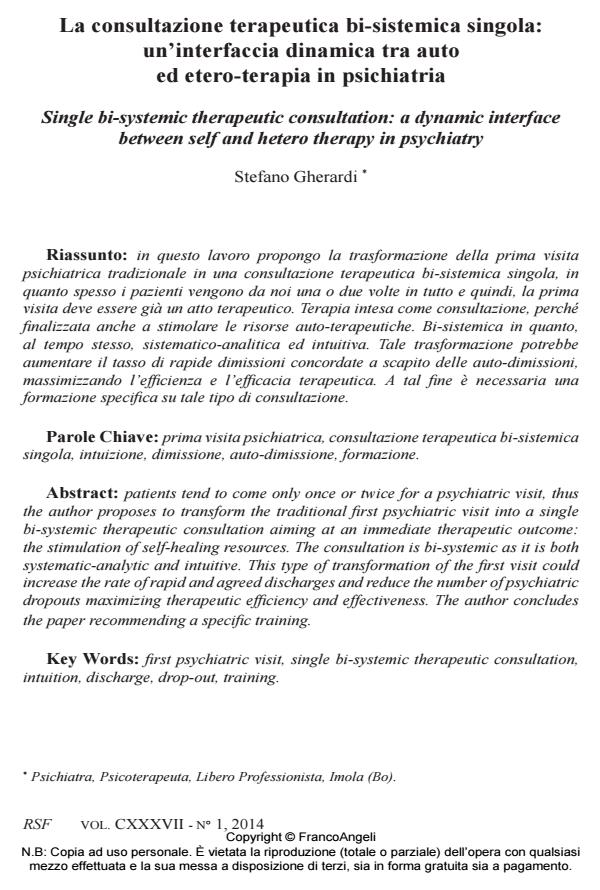Single bi-systemic therapeutic consultation: a dynamic interface between self and hetero therapy in psychiatry
Journal title RIVISTA SPERIMENTALE DI FRENIATRIA
Author/s Stefano Gherardi
Publishing Year 2014 Issue 2014/1
Language Italian Pages 9 P. 57-65 File size 704 KB
DOI 10.3280/RSF2014-001004
DOI is like a bar code for intellectual property: to have more infomation
click here
Below, you can see the article first page
If you want to buy this article in PDF format, you can do it, following the instructions to buy download credits

FrancoAngeli is member of Publishers International Linking Association, Inc (PILA), a not-for-profit association which run the CrossRef service enabling links to and from online scholarly content.
Patients tend to come only once or twice for a psychiatric visit, thus the author proposes to transform the traditional first psychiatric visit into a single bi-systemic therapeutic consultation aiming at an immediate therapeutic outcome: the stimulation of self-healing resources. The consultation is bi-systemic as it is both systematic-analytic and intuitive. This type of transformation of the first visit could increase the rate of rapid and agreed discharges and reduce the number of psychiatric dropouts maximizing therapeutic efficiency and effectiveness. The author concludes the paper recommending a specific training. .
Keywords: First psychiatric visit, single bi-systemic therapeutic consultation, intuition, discharge, drop-out, training
Stefano Gherardi, La consultazione terapeutica bi-sistemica singola: un’interfaccia dinamica tra auto ed etero-terapia in psichiatria in "RIVISTA SPERIMENTALE DI FRENIATRIA" 1/2014, pp 57-65, DOI: 10.3280/RSF2014-001004